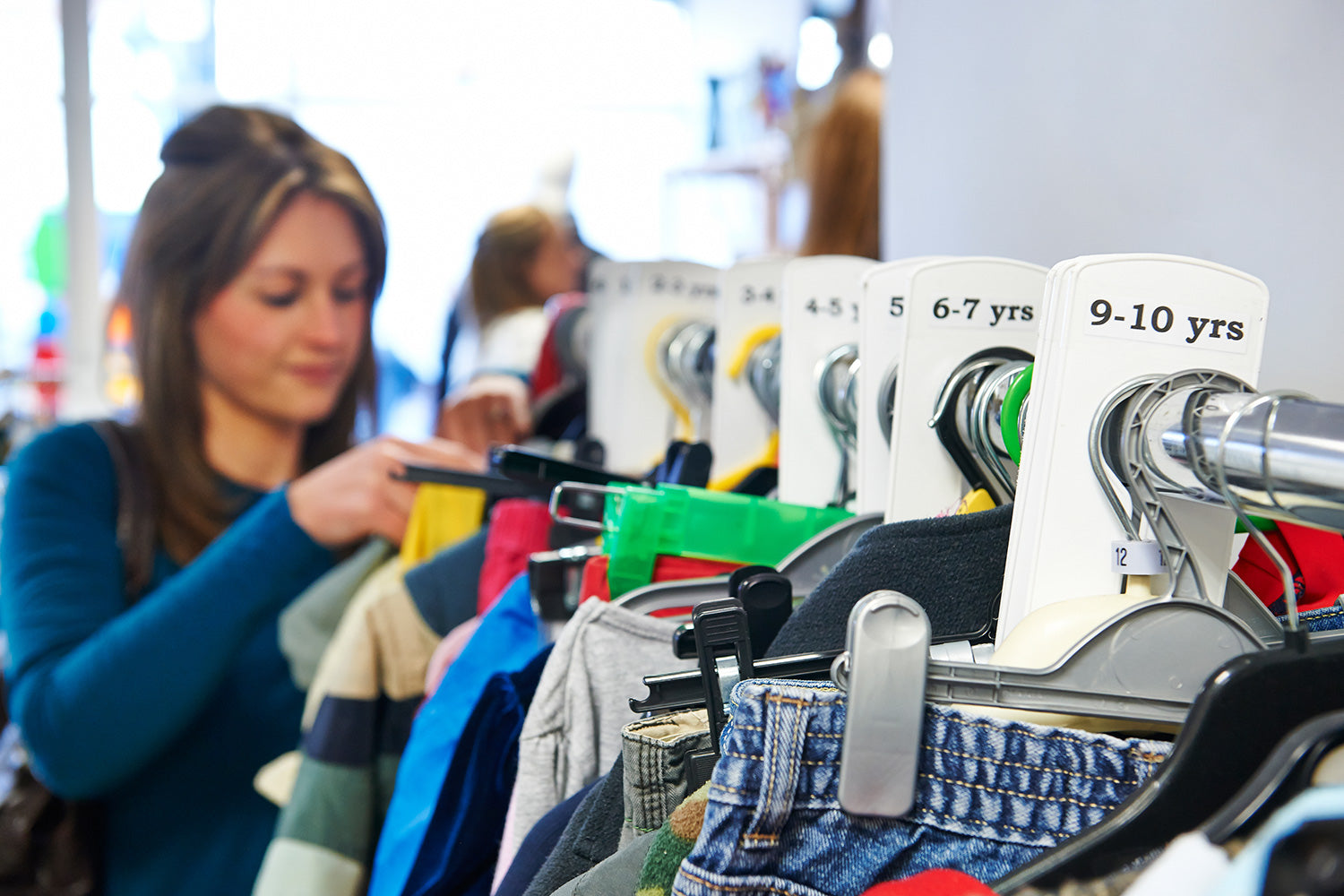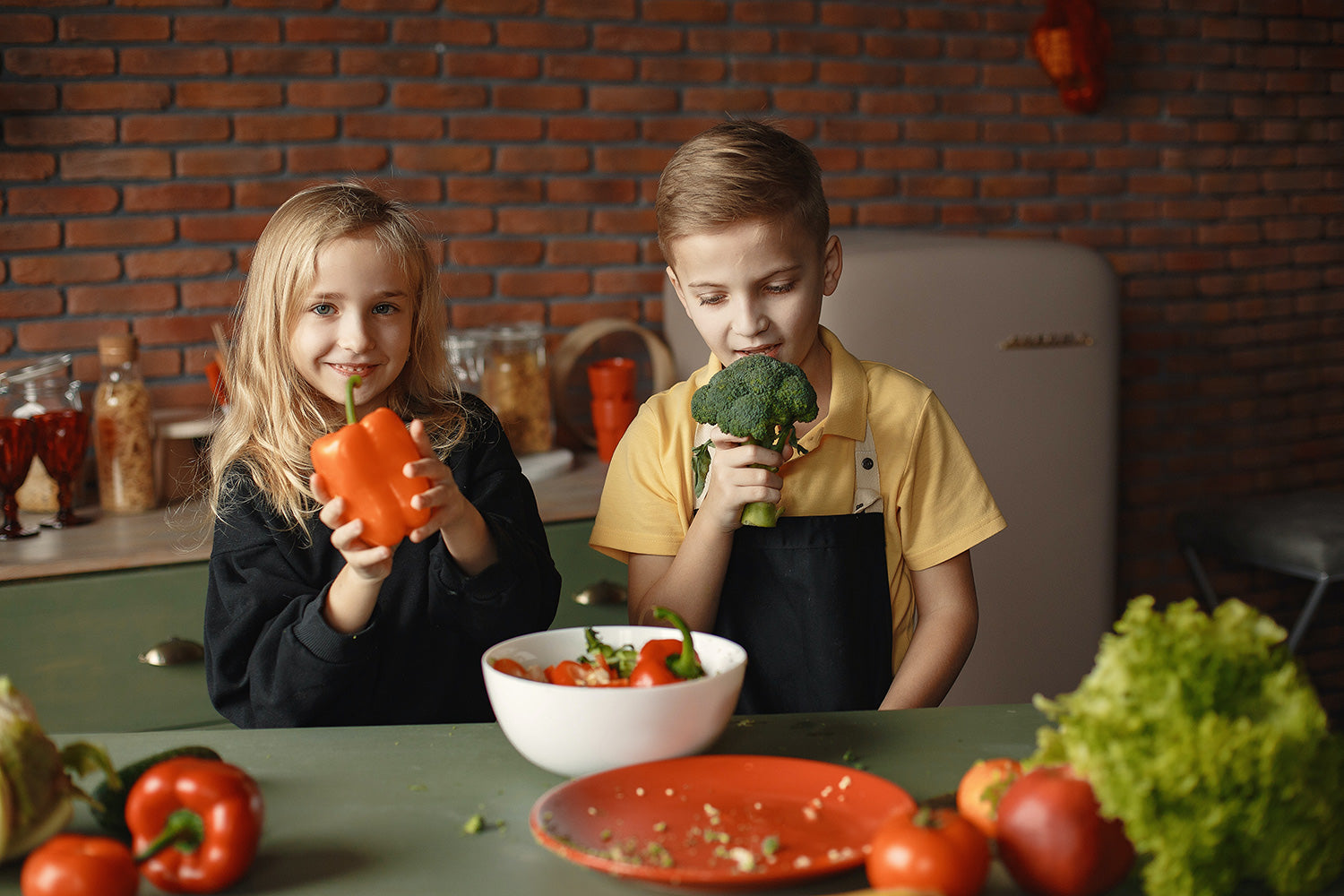As the world continues to grapple with pressing environmental issues, such as climate change, pollution, resource depletion, deforestation and loss of biodiversity, it's more important than ever for us to become aware of these issues, educate ourselves about their causes and effects, and take action to address them. By doing so, we can contribute to a healthier, more sustainable planet for ourselves and future generations.
It is also our responsibility to teach these future generations about sustainability and the importance of protecting our planet, as today’s children are the future guardians of our Mother Earth. By instilling environmental awareness in our children from a young age, we can help them become informed and passionate stewards of the environment. However, with so many complex issues and challenges facing our world, it can be difficult to know where to start. That's why we've put together this guide to nurturing environmental awareness in our children. From small actions like recycling and upcycling, to larger initiatives like circular fashion and reducing food waste, we'll explore some practical tips and fun, creative activities that parents can use to help their children develop a lifelong love and respect for the natural world.
-
The Importance of teaching kids about recycling
-
Exploring upcycling
-
Understanding circular fashion
-
The importance of reducing food waste
-
Watching environmental movies
-
Exploring nature with kids
-
Leading by example
-
The role of teachers and schools
The Importance of teaching kids about recycling
Recycling is one of the most basic and effective ways to reduce waste and protect the environment. By teaching kids about it, we can help them understand the importance of conserving resources and reducing pollution. Here are some tips for teaching kids about the importance of recycling:
Start by explaining the concept of recycling and how it works. It's a good idea to use language that children can understand and connect with, and to emphasize the positive impact that recycling can have on the environment. You can use examples of the things we no longer need, like used aluminium cans, plastic bottles, and paper products and explain to them how we ‘give’ them to special machines which turn them into new things like new bottles, cans, or paper. You can also tell them that this helps us use less resources, like trees and oil, to make new products and keeps things from ending up in the trash and polluting our environment. So when we recycle, we're doing something good for the Earth and helping to keep it healthy for all the plants and animals that live here.
Set up a recycling bin at home and encourage your kids to use it. Make sure they understand what can and cannot be recycled.

You can also involve your kids in the recycling process by taking them to a recycling centre and showing them what happens to the materials after they're collected.
Recycling doesn't really have to be boring or tedious. There are plenty of creative ways to recycle with kids that can be both fun and educational. For example, you can turn it into a game and challenge your kids to see who can collect the most cans or bottles in a week.
You could also create a recycling art project by collecting materials like cardboard boxes, plastic bottles, and aluminium cans, and using them to make sculptures, collages, or other art projects.
Exploring upcycling
Talking about upcycling with a kid can be done in a simple and understandable way. You can explain upcycling as the process of taking old or used objects and turning them into something new and useful instead of throwing them away. You can also teach them that unlike recycling, which breaks down materials, upcycling preserves the original materials and it not only helps reduce waste, but it can also be a fun and creative way to give old items a new life. Encouraging kids to upcycle can teach them the value of resourcefulness and creativity, while also helping to protect the environment.
Here are some ideas for exploring upcycling with kids:
Turn old jars into lanterns. Paint or decorate old glass jars, then insert a candle or a string of fairy lights to create a whimsical lantern.
Make a birdhouse out of an old boot. Cut a hole in the toe of an old boot, then hang it from a tree to create a quirky birdhouse.
Create a garden from recycled materials. Use old tires, pallets, or other materials to create raised garden beds or vertical gardens.
Turn old t-shirts into tote bags. Cut the sleeves and bottom off of an old t-shirt, then use the remaining fabric to create a reusable tote bag.
Create a pencil holder out of old cans. Paint or decorate old cans, then use them to store pencils, markers, or other art supplies.

Make a plant pot out of an old plastic bottle. Cut the top off of an old plastic bottle, then decorate it and use it as a planter for small plants or herbs.
Instead of throwing away a broken toy, use its parts to create a new toy or instead of throwing away a cardboard box, decorate it and use it as a storage container.
Understanding circular fashion
Circular fashion is a new approach to clothing design that aims to reduce waste and minimize the environmental impact of the fashion industry by creating a closed-loop system. In a circular fashion system, clothing is designed to be reused, repurposed, or recycled at the end of its life cycle, rather than being discarded as waste. By teaching our children to embrace sustainable fashion choices, we can help them develop a lifelong appreciation for the environment. Here are some tips for teaching your kids about circular fashion:
Start by explaining the impact of fast fashion on the environment. Help your kids understand that the fashion industry is a major source of pollution and waste, and that by buying clothes that are designed to be disposable, we're contributing to the problem.
Encourage your kids to shop second-hand. Thrift stores and consignment shops are great places to find high-quality clothes at a fraction of the cost of new clothes. By buying second-hand, you're reducing the demand for new clothes and helping to keep them out of landfills. The same goes for swapping clothes with other families or friends.

Shopping for second-hand clothing and accessories through apps is a great way to teach our children about sustainability and the importance of reducing our environmental impact.
Teach your kids about sustainable fabrics. Natural fabrics like organic cotton, bamboo, linen, and hemp are more eco-friendly than synthetic fabrics like polyester and nylon. Look for clothes made from sustainable fabrics, or encourage your kids to choose clothes made from natural fibres.
The importance of reducing food waste
By teaching children about the importance of reducing food waste, we can help them develop a greater appreciation for the value of food and the impact of our food choices on the environment. Food waste not only contributes to greenhouse gas emissions, but it also wastes valuable resources such as water and energy. Here are some ways you can reduce food waste:
Meal planning
Teach your children about reducing food waste by involving them in meal planning and grocery shopping. Your kids can help plan meals based on what is already in the fridge or pantry, and you can encourage them to choose foods that are in season and locally sourced.
Use leftovers
Encourage your kids to use leftovers to create new meals. For example, leftover chicken can be used to make chicken sandwiches or salads.
Portion control
Teach your kids to take only what they can eat and go back for seconds if they are still hungry. This can help reduce food waste at meal times.

Composting
If you have a garden, you can teach your children about composting and start a compost bin at home. This can help reduce food waste by turning scraps into nutrient-rich soil for gardening. Adding compost into the soil can also suppress plant diseases, and reduce the need for synthetic fertilizers, further highlighting the numerous benefits of composting.
Watching environmental movies
Watching movies can be a fun and engaging way to teach your children about the environment and the importance of sustainability. There are many cartoons, documentaries, films, and TV shows that offer insights into environmental issues and showcase ways to make a positive impact on the planet. By watching these types of programs with your kids, you can spark conversations about the environment and inspire them to take action to protect it and make positive changes in their own lives.
You can read about the beautiful environmentalism of studio Ghibli cartoons, or check our list of 10 best environmental movies.
Exploring nature with kids
Spending time in nature is essential for children's physical and emotional development. It is also a great way to teach them about the environment and the importance of protecting it. Children can learn about the natural world by observing plants and animals, exploring different habitats, and engaging in outdoor activities such as hiking, camping, or fishing. We can also teach our children about the impact of human activity on the environment, and how we can make choices that are better for the planet.

Spending time in nature can help kids develop a sense of wonder and appreciation for the beauty and complexity of the natural world and inspire them to become environmental stewards and protectors of the planet.
Here are some tips for exploring nature with kids:
Plan a nature walk
Take your kids on a nature walk in a park or forest. Encourage them to observe and collect leaves, rocks, or other natural objects. Talk to them about the different plants and animals they see and how they are connected to each other.
Start a nature journal
Encourage kids to document their observations in a nature journal. They can draw pictures, take photographs, or write down their thoughts and feelings about their experiences in nature. To make their nature journaling more eco-friendly, consider using a stone paper journal, a sustainable alternative to traditional paper made from trees.
Go on a nature scavenger hunt
Create a list of natural objects for kids to find on a scavenger hunt. This can include different types of leaves, rocks, or flowers.
Plant a garden
Planting a garden is a great way to teach kids about the environment and where food comes from. Let your kids help choose the plants and do the planting.

Volunteer for a nature conservation project
Find a local conservation project that allows families to participate. This can be a great opportunity for kids to learn about the environment and make a positive impact in their community.
Leading by example
The most effective way to teach kids about environmental awareness is definitely to lead by example. By practicing everyday sustainable habits and making eco-friendly choices, you can show your kids that caring for the environment is important and achievable. Here are some additional useful green living tips:
Use reusable bags, reusable water bottles, and containers. By using reusable items instead of disposable ones, you can reduce waste and save money.
Walk, bike, or use public transportation to reduce your carbon footprint and promote a healthier lifestyle.

Buy local and organic food - it is a great way to support sustainable agriculture and reduce the environmental impact of food production and transportation.
Reduce energy consumption. Turn off lights and appliances when you're not using them, and consider installing energy-efficient light bulbs and appliances.
Choose eco-friendly cleaning products. Many cleaning products contain harsh chemicals that can be harmful to the environment and to our health. Look for products that are biodegradable and non-toxic.
Grow your own food. Whether it's a small herb garden or a full-scale vegetable garden, growing your own food is a great way to reduce your environmental impact and eat healthier.

The role of teachers and schools
Teachers and schools also play a vital role in educating children about environmental awareness. Here are some ways that teachers and schools can promote it:
Incorporate environmental education into the curriculum. Teachers can use lesson plans and activities that teach kids about recycling, conservation, and other environmental issues.
Encourage sustainable practices at school by implementing recycling programs, composting, and energy conservation initiatives to reduce waste and promote sustainability.
Organize field trips to local parks, nature reserves, or environmental centres. These field trips can be a great way to get kids excited about the environment and learn more about local ecosystems.
Start an environmental club or group that focuses on environmental issues, and provides opportunities for students to get involved in environmental initiatives and activities.

Raising environmentally aware and responsible children is not just important for the health of our planet, but also for the well-being of future generations. By instilling a love for nature, modelling sustainable behaviours, and providing hands-on experiences, we can help our children develop a deep appreciation for the environment and a sense of responsibility for its care. From reducing waste to exploring nature to embracing circular fashion, there are countless ways that families can make a positive impact on the environment together. By working together, we can ensure a brighter, more sustainable future for our planet and all who inhabit it. Let's start nurturing environmental awareness in our children today!





























